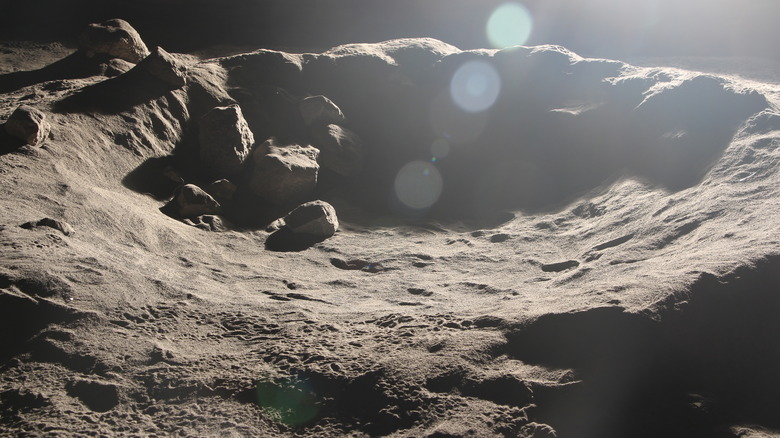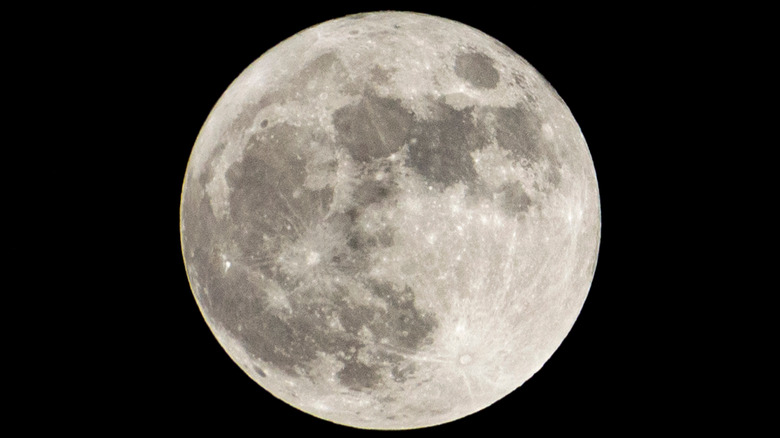Study Finds Glass Beads May Be A Promising Source Of Water On The Moon
Glass-like objects shaped like beads are a known feature of lunar soil; they were created under conditions of extreme temperature and pressure, such as from volcanic activity or an impact event. However, these glass beads might very well be the driving factor behind the moon's water cycle and could one day be used to harvest water for astronaut missions.
Analysis of lunar soil brought back by China's Chang'e-5 mission has revealed what scientists call "hydration signatures" which are said to showcase water abundance that seems to be a result of water diffusion through solar winds. The findings published in "Nature," which come courtesy of experts at the Chinese Academy of Sciences, suggest that these lunar glass beads contain a "substantial amount" of water. In fact, glassy beads like this could very well be the source of hidden water on other celestial bodies like the moon, which lack their own well-defined atmosphere.
Regarding the discovery, a member of the research team Professor HU Sen remarked that "these findings indicate that the impact glasses on the surface of the moon and other airless bodies in the solar system are capable of storing solar wind-derived water." The promising research notes that these glass beads act as some kind of sponge, but the amount of water trapped by them isn't particularly high. Characterized by a uniform chemical composition and a smooth surface, the glass beads found in the lunar soil samples contain about 2,000 micrograms of water per gram of the glassy material, according to the study.
Plenty of water, but harvesting is the key challenge
That's a very small amount, but considering that glass beads are abundant in the lunar soil, the research team estimates that the moon could be harboring approximately 600 trillion pounds of water. That's nowhere close to the water abundance on Earth, but it's still a sizeable amount. The biggest challenge, however, would be extracting water from these glass beads. For that, astronauts on the moon will have to heat it in order to extract and store it for consumption and other critically important tasks.
The team also noticed that the traces of water found in these glass beads are extremely scarce in deuterium, an isotope of hydrogen. Since solar winds are also low in deuterium and the sun happens to harbor the other isotope of hydrogen called protium, the team concluded that water trapped in these glass beads comes from solar winds. When hydrogen atoms carried by solar winds react with oxygen and oxygen-based materials that form the glass beads, water is produced.
Another major implication of the discovery is that glass beads could be a key reservoir of water trapped in the form of ice in polar regions of celestial bodies, which permanently live in a shadow. And if the moon is any indication, water trapped in these beads should act as the buffer between water that is released into space and the rest of which is replenished back to the surface in a cyclic fashion.

